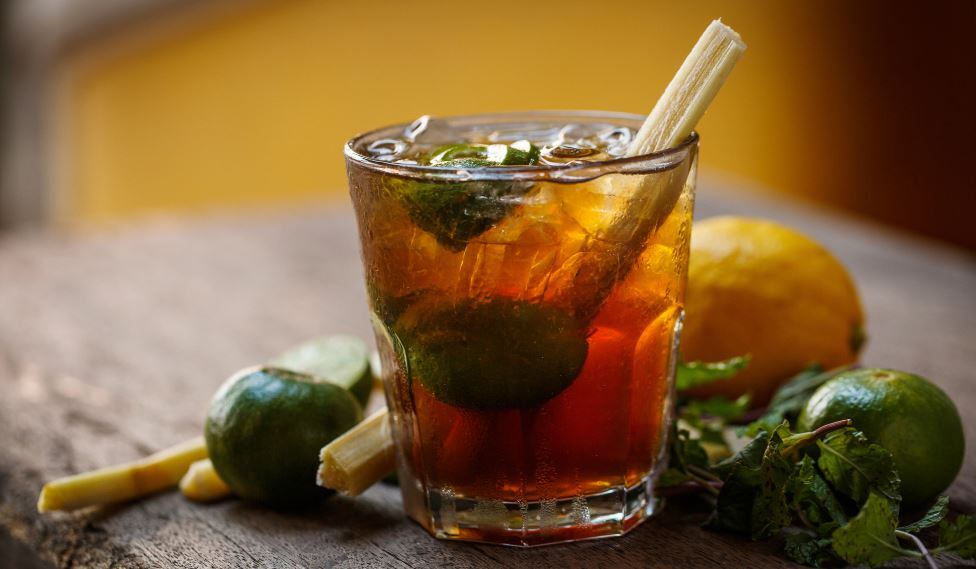The category accounts for 17.2% of overall spirits sales in GB on-trade, which over indexes as 20.2% of spirits sales in pubs, CGA OPMS QTR data to 27 January 2018 shows.
Overall, whisky value is in a positive place, growing at 1% to £1.1bn despite whisky volume performance dipping slightly, CGA OPM MAT data to 24 March 2018 shows.
Volume sales have dropped by 3.3%, with 427,000 fewer 70cl bottles sold compared with the past 12 months, figures for the same period show. The decline, according to CGA, is driven by a dip in whisky’s rate of sale, which has seen a 2.6% year-on-year fall.
Much of the blame for the volume sales dip can be attributed to the performance of standard blends, which dropped by 3.3% in volume terms. Areas of strength, however, lie within malts, imports and premium blends. Premium blends, for instance, increased in sales by 3.1%.
Standard blends’ performance aligns with the three key barriers whisky has historically faced, such as taste, image and complexity. These stats show the whisky market is following the same trends as other drinks categories, mainly a switch to drinking less but better quality products.
As expected, premium whiskies are outperforming standard across the market. But premium doesn’t necessarily equate to malts or aged products, as CGA data shows non-aged variants are also in growth, in many cases quicker than aged statement brands.
Richer whisky experiences
Much of this growth is driven by consumers’ desire to have richer whisky experiences, which they want to deep-dive into the category to gain more knowledge. “People want to be captivated, engaged and taken on a journey,” says Clare Moscrop, senior category strategy manager, on-trade.
“Exploration will be a long-term driver of growth as people look for ways to expand their knowledge, experience and skills,” Moscrop adds.
“There is greater interest in the production methods, heritage and stories of products given the innate heritage and craft that whisky is well placed to capitalise on.”
Growth of the premiums has been driven by accessibility to products and increased consumer desire to maximise their experience, choosing to drink better and discover new brands. Outlets are responding to this trend by stocking more whisky brands which, in turn, is helping make whisky more accessible. As with many spirits categories, long gone are the days where a pub or bar stocked one entry-level whisky on an optic, with an expensive aged upsell behind the bar.

Imports are proving to be of considerable interest to consumers. Recent years have seen the growth in popularity of whiskies from countries such as Canada and Japan, with volumes up 3.4% compared with four years ago, CGA OPM MAT to 24 March 2018 shows.
This interest in imported whisky has tended to come at the expense of Scotch whisky sales. However, distillers such as Diageo see huge untapped opportunity for Scotch in its home market and are making significant investments to drive consumer interest and understanding.
The company recently announced a £150m investment over a three-year period to transform its Scotch whisky visitor experiences. At the centre of the investment is a Johnnie Walker immersive attraction in Edinburgh, which will bring the story of the brand to life. Diageo’s 12 visitor centres will also be upgraded to further showcase the craft that goes into its whisky brands.
Boost whisky sales
Understanding how customers opt for whisky in the on-trade, though, can help operators boost sales. Type, quality and flavour top consumers’ main needs, with whisky drinkers tending to prefer a more premium serve than drinkers from other spirits categories.
When it comes to range, whiskies should be categorised by type and flavour, both in the number of products stocked and how the menu is laid out. “The idea is to make the flavour profiles of different brands as clear as possible, demystifying the primitive image of whisky and instead showcase the versatility of the spirit and brands within the category,” said Rob Poulter, Diageo on-trade consultant. “Categorise whiskies as sweet, fruity, spicy and smoky.”
Focusing on post-meal occasions can also help to drive sales, as Kantar Worldpanel data for 2017 showed whisky over-indexes between 8pm and 11pm when compared with every other spirits category.
This is highlighted by stats that show 12.4% and 12.5% UK cocktail drinkers typically drink Ameri-can whiskey and Irish whiskey respectively in cocktails out of home (CGA Mixed Drink Report, September 2017), compared with 12.6% who drink blended whiskey and 10.8% who drink malt.
This trend is also underlined by, for example, the fact that at Diageo Reserve GB’s World Class Bartender of the Year 2017 final, seven out of 12 signature serve cocktails were whisky based. This all suggests that whisky cocktails are making their mark at a high level and now starting to come into the mainstream.
Brands in growth to consider stocking include Bulleit Bourbon, Haig Club Clubman, Dalwhinnie 15-year-old, Johnnie Walker Red Label, Jameson, Monkey Shoulder and Woodford Reserve.
Though complex and showing decline in some areas, whisky has a strong place in pubs with segments of outstanding growth. There is a wealth of choice on the market, meaning there’s something for everyone, which must be a big part of the conversation with drinkers at the bar.
